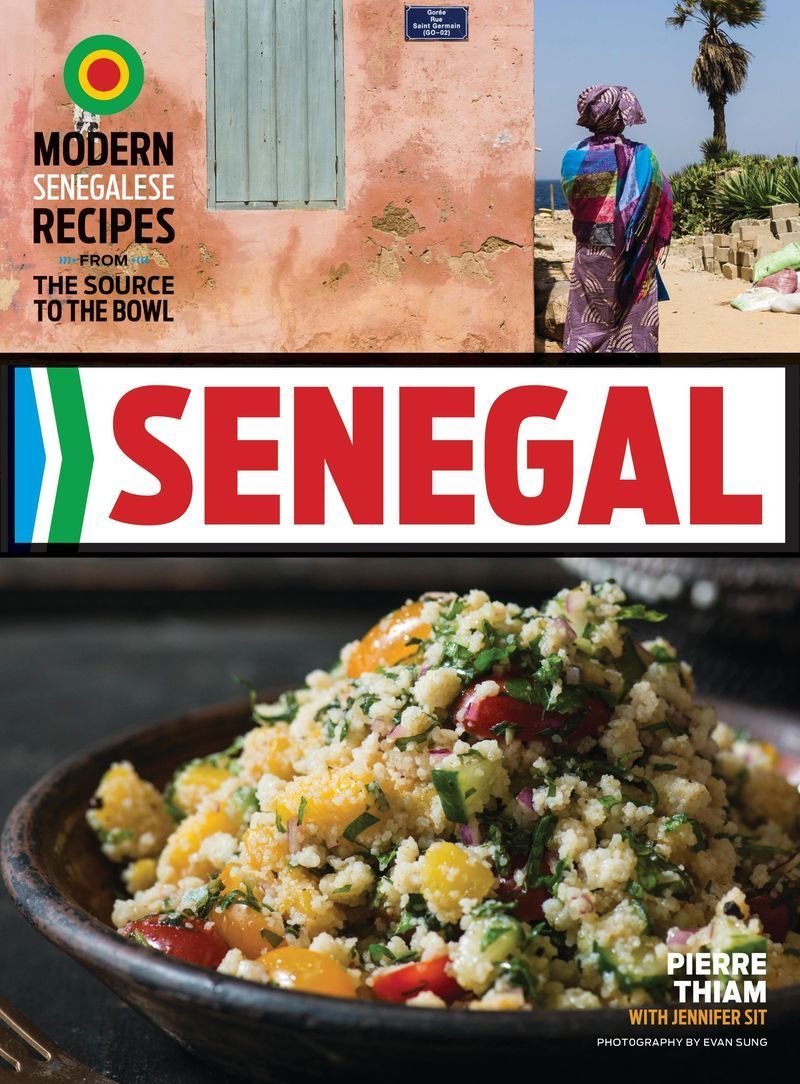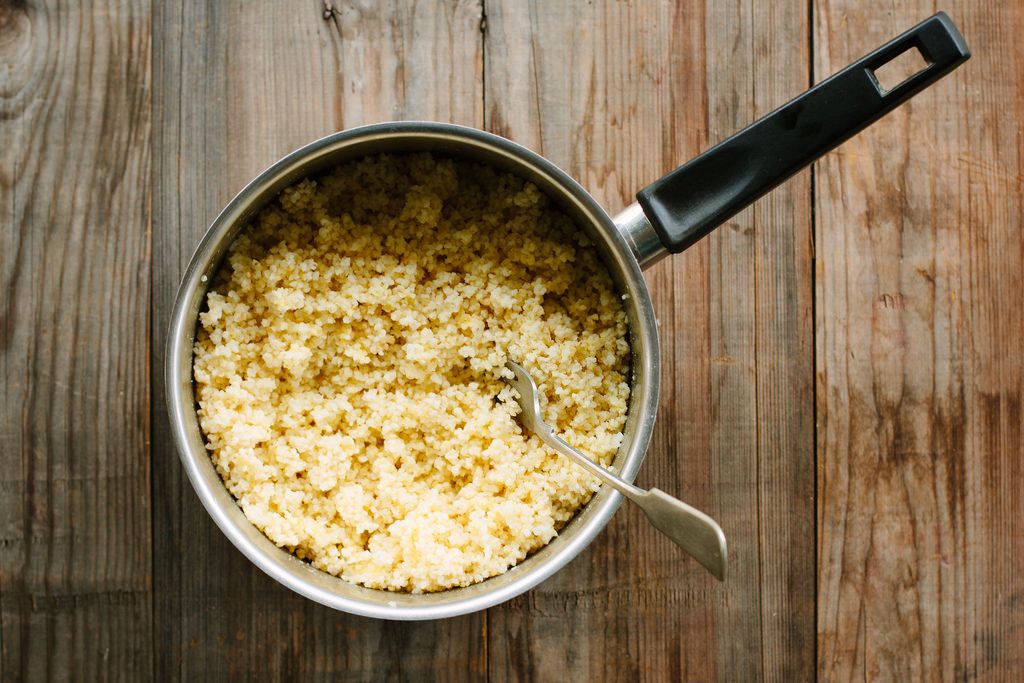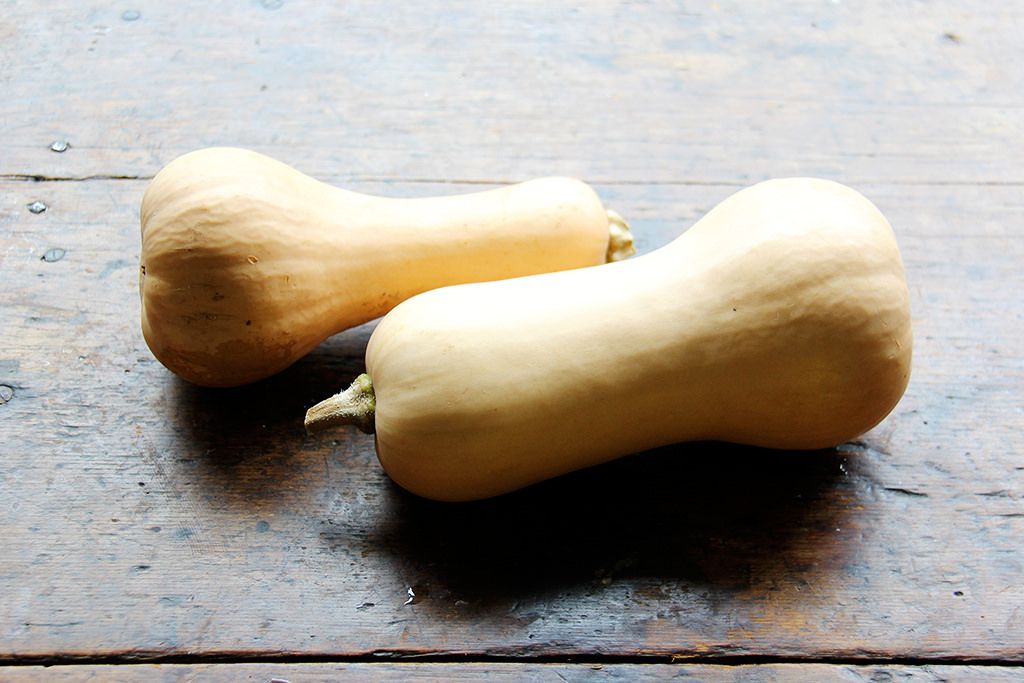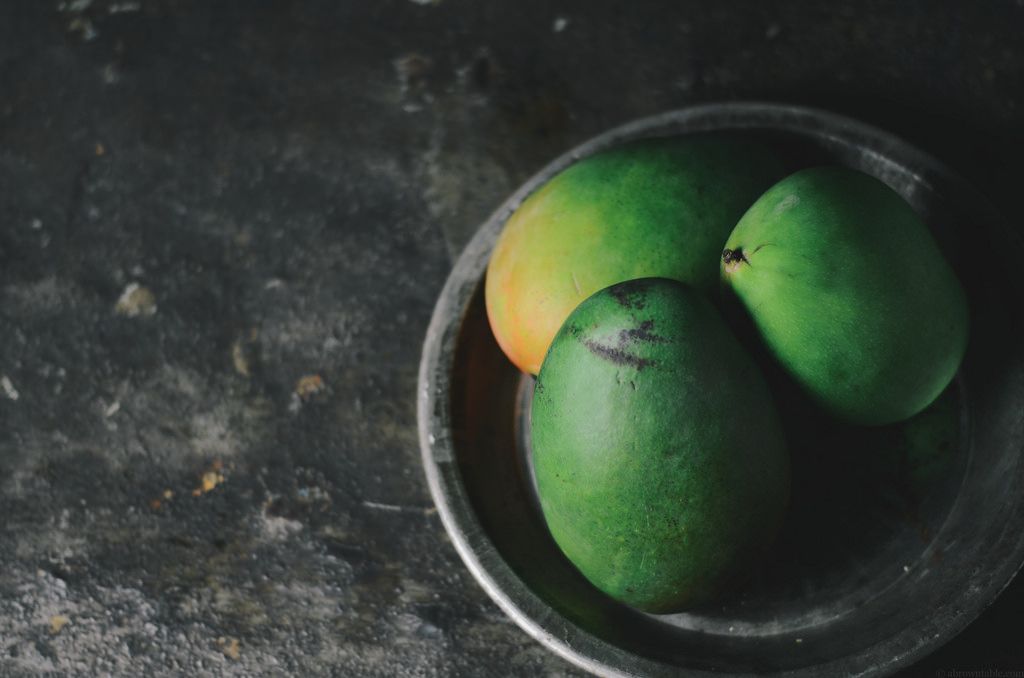Pierre Thiam's Senegal has foundational recipes (like the national dish of Senegal, Thiebou Jenn) and updated classics (take Vegetarian Joloff Rice, one of many vegetarian and vegan friendly versions in the book). But the most intriguing part of this stunning book are the recipes you won't even find in Senegal. Here, the Dakar-born, New York-based chef is showing us the future of Senegalese food.

What does the future look like? Classic Senegalese ingredients (including many we'd call superfoods, like spirulina, millet, red palm oil) meet cooking techniques from farther afield: Think Fonio Sushi, Ginger-Lime Peanut Hummus, and Eggplant & Palm Oil Risotto. And, sure, some ingredients might be hard to track down (fonio, moringa, and baobab, for instance), but substitutions are possible: A simple internet search taught me that you can combine equal parts nutmeg and black pepper in place of selim pepper, which I couldn’t find online or in four African stores.
More: With a bag of millet, you can make five dinners.
To further help your quest to cook Senegalese food (trust us: It’s a good idea), here’s a map to the recipes in the book—what we want to make when:

If you only make one dish:
Slow-Roasted Leg of Lamb, Dibi-Style. Lamb cooks wrapped in heavy craft paper in the oven for 8 hours at very low heat (175° F!). It’s slathered with a spicy sauce you’ll want to keep around for other dishes: tomato-based with tamarind, fish sauce, and Scotch bonnet peppers. The result is meat that practically melts.
If you don't want to hunt for obscure ingredients:
Black Eyed Pea Fritter Sandwiches with Spicy Pickled Carrots. Think falafel (the Lebanese community has had a big impact on Senegalese food)—but like never before. The black eyed peas are puréed raw like chickpeas are for falafel; spiced with Scotch bonnet peppers, rice vinegar, and amounts of cilantro you’d only see on a banh mi; deep fried; then stuffed into pita with the pickles, tomatoes, and cilantro.

If you hunt down only one ingredient:
Fonio. There are a lot of really interesting, very healthful foods from Senegal, but fonio is the one to seek out. It’s a tiny grain related to millet that is drought-resistant, quick-growing, and more nutritious than quinoa. It can be steamed, used like couscous or pilaf, or even popped like popcorn. You can find it online.
To make tonight:
Kale, Avocado & Grapefruit Salad. This dish shows off the amazing produce from Senegal’s most agriculturally rich region that, lucky for us, is also available at every grocery store. It’s all about the produce here: The fruits and veg are treated simply and served with raw red onion, roasted cashews, and a vinaigrette made from mustard and grapefruit juice.
To eat throughout the week:
Chocolate Mango Pound Cake. Mango and chocolate melt into a yogurt-based batter. It's a rich, dense cake that collapses in the middle (think Nigella's genius Chocolate Loaf Cake).

To serve to Thanksgiving guests:
Ginger Butternut Squash Soup. Not at all out of place at your holiday table—just with a little more flare. The soup, zingy from the ginger, is topped with a lime-mint salt and a Senegalese gremolata: parsley, scallion, garlic, Scotch bonnet, and lemon.
If you want to try something unfamiliar:
Kilishi Green Mango Salad. This one has homemade beef jerky (kilishi), fish sauce (there’s a big Vietnamese community in Dakar), and tangy mango.

Photos by James Ransom, Emma Galloway, Ali Stafford, and Nik Sharma.
See what other Food52 readers are saying.